During the Second World War the two seat ground attack aircraft C-3603 was developed in Switzerland. Approximately 150 of them were produced for the Fliegertruppe, which later became the Swiss Air Force.
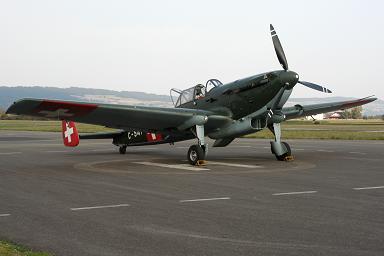
After the war these aircraft were quickly replaced by jets. A small number was however kept in service for target towing. When their Hispano-Suiza 12 cylinder 1000 hp piston engines reached their end of life during the sixties they were replaced with Avco Lycoming T-53 propeller turbines. Due to the much lower weight of the turbines compared to the piston engines the nose of the aircraft had to be extended by 1.5 m to retain the centre of gravity. This, combined with the black and yellow striped paint scheme which was selected for safety reasons, gave the aircraft a unique look. The nickname “flying pedestrian crossing” speaks for itself. The rebuilt aircraft were called C-3605 and remained in service until 1987.
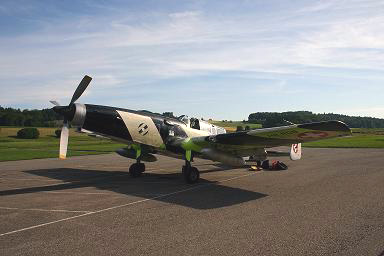
The specifications of the C-3605 are:
- Wingspan 13.8 m
- Length 12.9 m
- Power 1115 hp
- Weight max. 3716 kg
- Range 1000 km / 540 nm
- Flying time max. 3 h
- Max. speed 560 km/h / 300 kts
- Climb rate max. 12.5 m/s / 2450 ft/min
After retirement the C-3605 were sold at an auction. Private buyers bought some of them, others went to museums. C-3605 C-494, built in 1943, was stored for 14 years and then brought back to flying condition under the civilian registration HB-RDB. It was then flown at various airshows in Switzerland and neighbouring countries until 2005, mostly by my friend and flying instructor Michael Magnin.
I had the opportunity to fly with it as a passenger when it was flown on the 26th June 2004 to the Belpmoostage airshow, celebrating 75 years of Berne-Belp airport. Thanks to our arrival in Berne early in the morning we could rehearse the airshow program, which allowed me to shoot a number of great photos, like the following shot of Berne airport while performing a barrel roll.
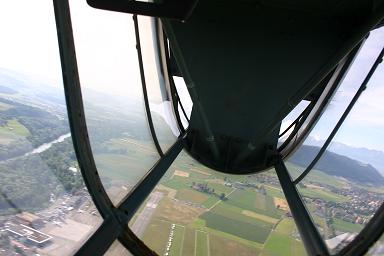
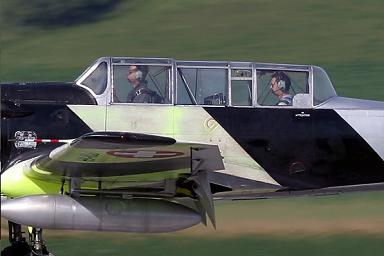
The following pictures were taken during the regular airshow, during which no passengers are allowed in performing aircraft:
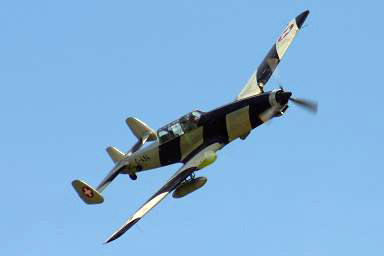
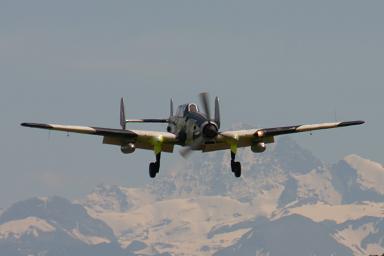
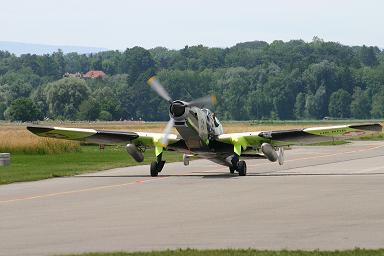
In 2005 HB-RDB was sold to Germany, where she still flies today as D-FOOT. After being stored for some time in Bremgarten (EDTG), she had to be flown for certification by the Luftfahrt-Bundesamt to Braunschweig (EDVE). Again Michael Magnin was asked to fly her there, as just about nobody was left with the necessary type rating. As I am frequently in Braunschweig for my job I instantly volunteered to serve as the navigator…
The C-3605 does not have double controls, as the second cockpit was originally uses for the gunner and later for the winch operator. With the exception of a compass it also does not have any navigation instruments like GPS or a VOR receiver. A navigator in the second cockpit is therefore quite handy on longer flights.
To travel from Lommis (LSZT) to Bremgarten (EDTG), as well as to return from Braunschweig (EDVE) to Lommis we used an Archer II, which was flown by Bernhard (see also Italy 2006) and Isabel, two fellow pilots form our club in Lommis.
1. Day:
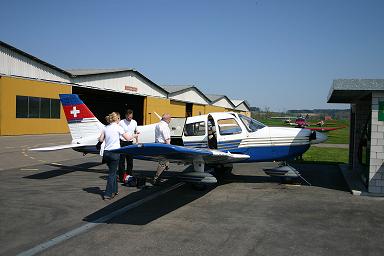
After a quick briefing and filing of a flight plan we flew from Lommis (LSZT) to Donaueschingen-Villingen (EDTD) for customs. From there we continued straight to Bremgarten, as we intended to reach Braunschweig the same evening.
After arriving in Bremgarten we first had to pull the C-3605 out of the huge hangar. It is quite impressive how much space there is at some airports compared to Lommis.
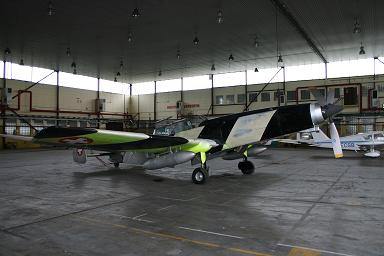
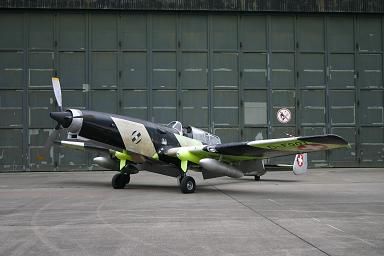
We then faced the biggest challenge of our trip, which was to stow the towing bar of the C-3605 in the back of the Piper Archer II…
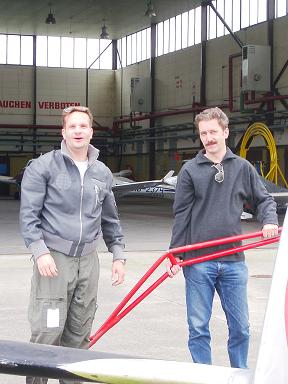
After some artistic gymnastics and nearly removing the backseat of the Archer we finally succeeded. Taking the towing bar out again in Braunschweig proved to be even more difficult…
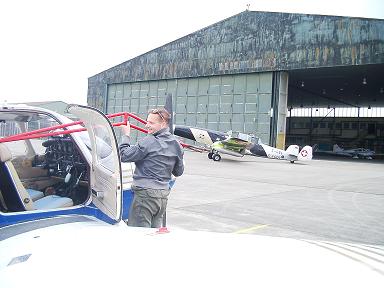
Half an hour after Berni and Isabel had departed towards Braunschweig we took off too. East of Frankfurt we hit a front that nearly forced us to turn back. Luckily for us however it was rush hour on the Autobahn so we managed to cross the front by just following the lines of head- and taillights, flying relatively low… On the picture below the flying directions is left to right…
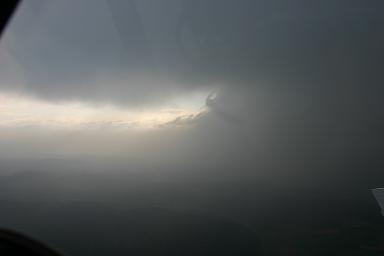
Behind the front we found perfect flying conditions, which made terrestrial navigation much easier. The excavation piles of the potash mines (Kali in German), which are known locally as Kalimandscharos, are good orientation marks in the otherwise quite uniform landscape, as they are marked on the maps and visible over long distances.
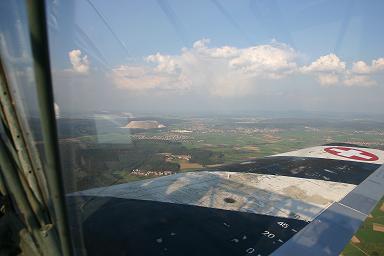
The same applies to the high speed railway line of the DB AG (one of my customers) from Würzburg via Fulda, Kassel and Göttingen to Hanover, with it’s many spectacular bridges.
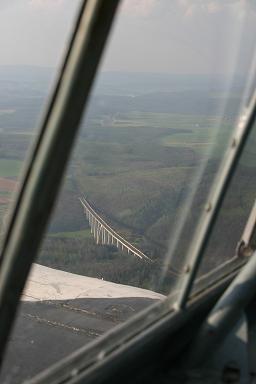
Below a picture of the navigators workspace with Bottlang-Manual, Jeppesen map and handheld GPS as backup. The picture show the view forward, with the armour plate behind the pilots head. Apart from that however the view from the large canopy is just great.
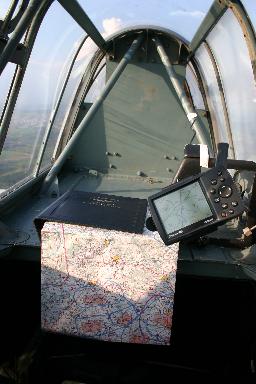
We then continued along the foothills of the Harz mountains…
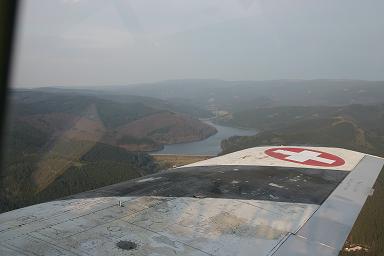
…to the steel mill which marks the southern VFR reporting point of the airport of Braunschweig.
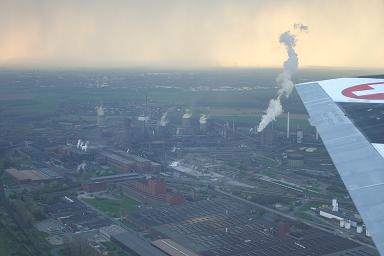
The approach to runway 08 passes along the western edge of the city, along the motorway A391…
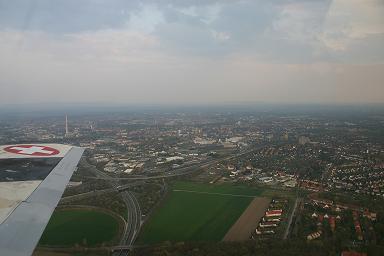
…to the intersection Braunschweig-North of the A2 motorway Hanover – Berlin, from where a right turn leads directly on to the final of runway 08.
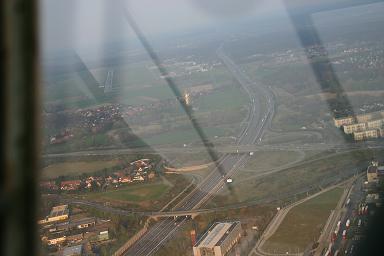
A look back after the landing gives a impression of the original double vertical fins of the C-3603, to which as third fin was added for stability reasons when the empennage was lengthened by 1.5 m due to the turbine installation.
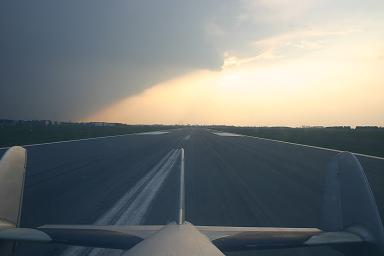
Immediately after reaching the parking position a fire fighting vehicle arrived with blue lights, but not because of any fire. The firefighters just wanted to have a look at the unusual plane, one even asked to have a picture taken of himself sitting in the cockpit.
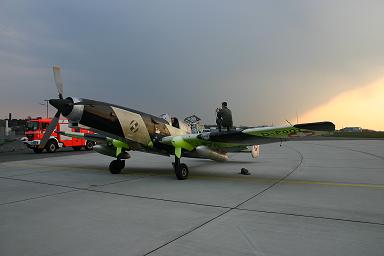
In the C-office we were asked to report to the tower, where the controller accused us of having reported passing the Sierra reporting point much too late. He complained that we had reached the final approach just about one minute after passing Sierra, which he considered impossible. We just told him to have a closer look at the plane on the apron, which elegantly closed the discussion…
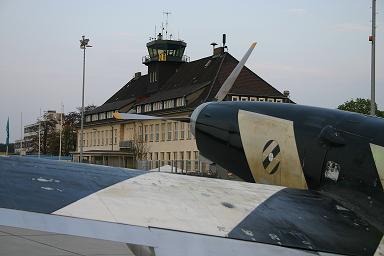
After this episode we still had to move the C-3605 to the hangar of the company Aerodata, where she would be prepared for the acceptance check for German registration.
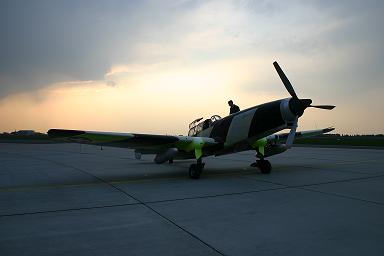
2. Day:
On the second day we first flew from Braunschweig to Coburg Brandensteinsebene (EDQC) in Oberfranken (northern Bavaria). As my checkflight was due anyway and the flying instructor with us we used the flight for that purpose. As if the weather had known this a strong and turbulent wind blew for the landing. The airport of Coburg lies quite spectacularly on top of a hill, which created strong turbulence and downdrafts on the finale to runway 12 (which also drops 100 ft on 800 m length…). The Cessna following behind us landed so hard that it struck the runway with the propeller…
We then continued from Coburg via St. Gallen Altenrhein (LSZR) as customs airport back to Lommis.
Figures:
The 330 nm from Bremgarten (EDTG) to Braunschweig (EDVE) were covered in approximately1h 40min fling time. This gives an average speed of approximately 200 kts. It took the Archer II crew roughly twice that time, so even thought they took off in Bremgarten half an hour before us we had to wait around one hour in Braunschweig for them to arrive.
Conclusions:
Terrestrial navigation at 200 kts cruise speed and a few hundred feet altitude is quite different from cruising at the leisurely speed of an Archer II. 1115 hp are definitely a lot of fun, especially when you don’t have to pay for the fuel…
Bernhard Stamm
